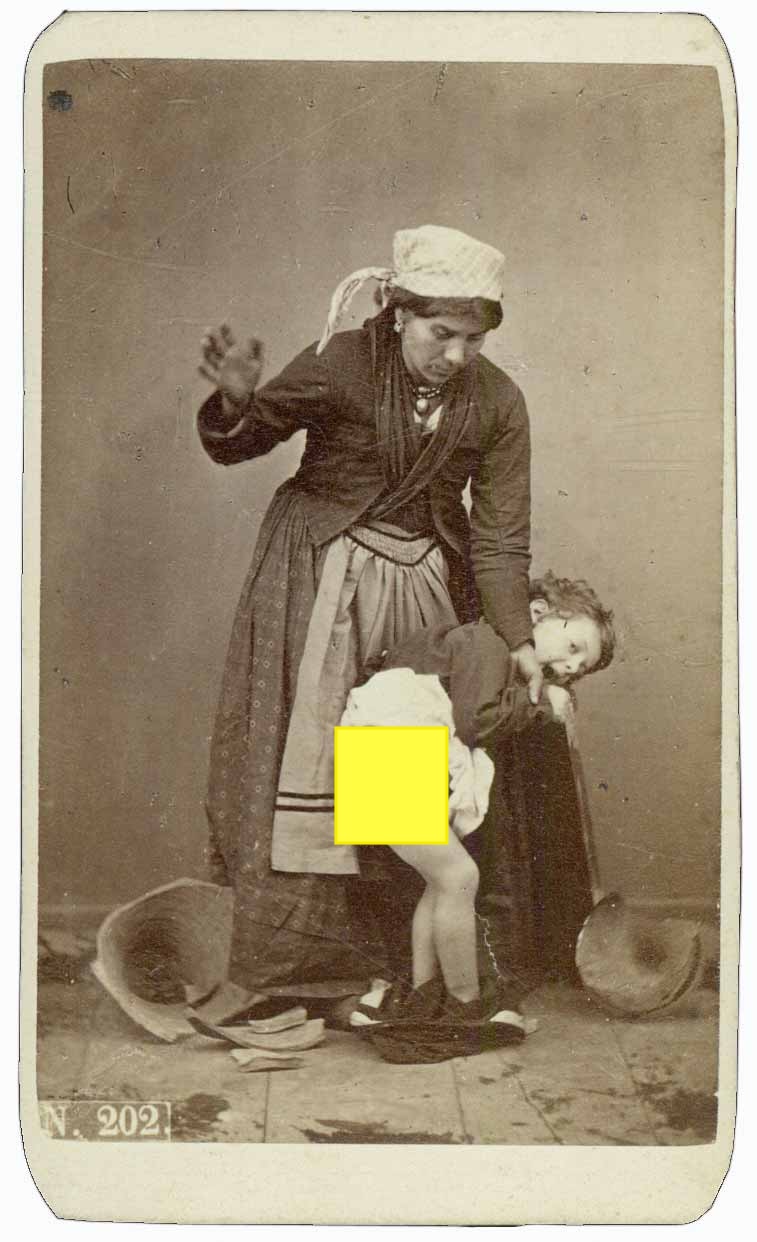JUNE 1, 2025 – This evening our son and granddaughter joined us for dinner, while “Mom” was working. Well into the proceedings when Illiana slipped away to fetch something, Beth summoned her back and issued a mild reprimand.
“At school do you just get up and wander around the lunchroom when you’re finished but before you’re dismissed?” It was a dangerous question—one to which the questioner didn’t know the answer. (As every litigator knows, on cross-examination, you never ask an adverse witness such a question.)
As luck would have it, however, Illiana answered “No.”
“That’s a rule as old as Grandma,” said . . . Grandma.
Thus launched a conversation about schoolhouse comportment and punishment for breaches of expected behavior, including occasional spanking.
Beth told the story of some incorrigible kid in her class who one day pushed the teacher too far. The teacher called the principal, who was not at all pleased. In the hallway, he gave the disruptive kid the full force of the disciplinary paddle—snapping the device in two. With a scowl on his face the principal entered the (silent) classroom and demonstratively tossed the broken paddle into the trash can. His extreme displeasure was duly observed.
Illiana was as perplexed as she was amused by the anecdote. Corporal punishment is unheard of in her experience, and thankfully so. But she was curious. “Did my daddy ever get spanked?” she asked, smiling at her dad.
“Once,” said Beth. “He was about five years old and misbehaving. I told him that if he kept it up I’d give him a spanking. He said, ‘Oh, you will not.’ – ‘Yes I will,’ I said, and he said, ‘No you won’t.’ He kept at it until finally, I spanked him.
“The next day at school he told his teacher, ‘My mommy spanked me.’ I know this because the teacher called me! By this stage, child abuse was supposed to be reported whenever it was observed by a teacher, and the teacher was simply following the rules.”
I detected puzzlement on Illiana’s face, as she tried to absorb the contrast between applicable standards when her grandparents were school age and the rules when her parents were of that age.
I then took her back to my childhood and told her the story of our “home paddle,” which was used almost exclusively on me and deservedly so.
“We had a foot-and-a-half-long wooden paddle in our house,” I said, “that was nicely varnished on one side. It had a round illustration on the end featuring two kids hanging over the edge of a barrel with their keisters shooting the moon. Imprinted on the rest of the paddle was the rhyme, ‘NEVER SPANK A CHILD IN THE FACE, NATURE PROVIDES A BETTER PLACE.’
“On the reverse side just below the handle were the words, ‘Victims sign here.’ My name was scratched into the wood at least a dozen times.” (My sister’s (Jenny) name appeared once or twice.) During a boring rainy summer day, I etched my name five or six times to advance my reputation as a rebellious nine-year old. It seemed like a fun thing to do. It might have been on that occasion that Jenny borrowed the idea from me.)
In fact, I do remember “getting the paddle” every so often after I’d mouthed off to my mother in the midst of some stupid tiff. To her credit she would give me lots of rope, but eventually her patience ran out, whereupon she called in the “enforcer.” Dad was by absolutely no means abusive in the fashion I’d hear kids on the school playground talk about their dads. I couldn’t imagine such behavior. But Dad would not brook disrespect, and when I crossed the line—not with my little toe but by leaping way out of bounds with both feet by calling my mom names and telling her I “couldn’t stand her”—he’d pull out the paddle (stored on top of the lofty secretary in the den) and give me one good swat against the seat of my pants.
It always stung, but the sting never lasted more than a nano-second beyond the impact. I was rather amazed, actually, that Dad could deliver such a perfectly calibrated whack with the paddle. It was as though he had a mechanical arm with a meter that could be set exactly according to the severity of the offense that had triggered the spanking. As I reflect on it, Dad’s version of corporal punishment was limited to a single exclamation mark, meted out effectively because it was delivered with such exactitude—following the pattern of everything else that Dad said or did in life.
What hurt far more than his corporal punishment, however, was his disapproval. It worked as a sufficient deterrent . . . at least until the next time I pushed poor mom beyond the limit of her impressive patience.
Subscribe to this blog and receive notifications of new posts by email.
© 2025 by Eric Nilsson
